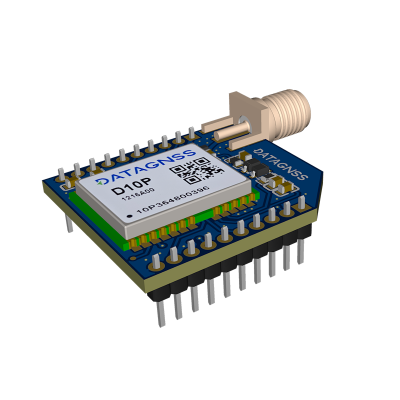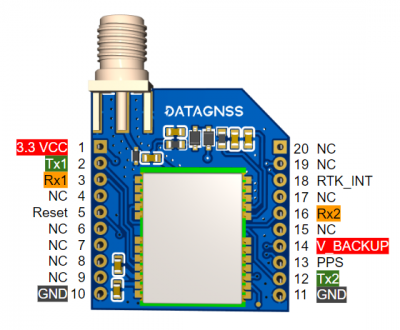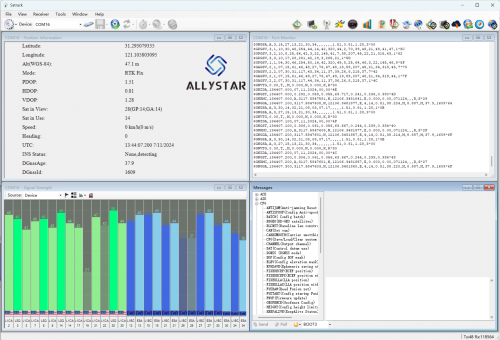NANO-AGR-SMA
Jump to navigation
Jump to search
NANO AGR RTK Receiver
NANO AGR RTK Receiver is a multi-constellation, multi-frequency RTK receiver.
It is based on Allystar's new generation dual-core GNSS SoC and supports up to 10Hz data output.
NANO AGR RTK Receiver supports conventional RTK base and rover functions.
It supports a maximum of 128 hardware channels and can receive almost all visible satellites.
Feature
- Output rate 5Hz default, max up to 10Hz
- Support Multi-bands Multi-constellations
- Support RTCM output and input
- Support NMEA output
- Support setup base staion automaticlly
- Support dual-UART interface
Specifications
GNSS
- GNSS Constellation
- GPS/QZSS L1, L5
- GALILEO E1, E5a
- GLONASS G1
- BDS B1I B2a
- Frequencies: L1+L5
- Channels: 128 hardware channels
- Protocol
- NMEA output, GGA/GSA/GSV/VTG/ZDA/GLL/RMC/GST/TXT
- RTCM v3 input and output (support MSM7 output, MSM4/MSM5/MSM7 input)
- Output rate: 1/5/10 Hz
- 5Hz default (Dual-band, GPS/GALILEO/BDS/QZSS)
- 10Hz (Dual-band, GPS/GALILEO/BDS/QZSS, GGA/RMC/VTG 10Hz other messages 1Hz)
Accuracy
- Single Positioning
- 1.5m CEP
- RTK Positioning
- H: 1cm + 1PPM
- V: 3cm + 1PPM
Interface
- UART: 2 UART, default 230400bps
- RF: SMA-K connector
- 2.54mm Pin Header, 20 pins
Electronic
- Input Vcc: 3.3V (Typical)
- TTL level: 1.8~3.6V
Environment
- Operational temp.: -20~85℃
Others
Pin definition
GNSS Antenna recommendation
There is a built-in LNA and SAW in the module.
It is recommended to use an active antenna with gain less than 30 dB and the noise figure less than 1.5 dB.
However, if you are using a longer cable, this gain can be increased appropriately.
Test utilities
Top Left: Position information Top Right: Data monitor
Bottom Left: Signal Bottom Right: Config command
Download Satrack latest version.


